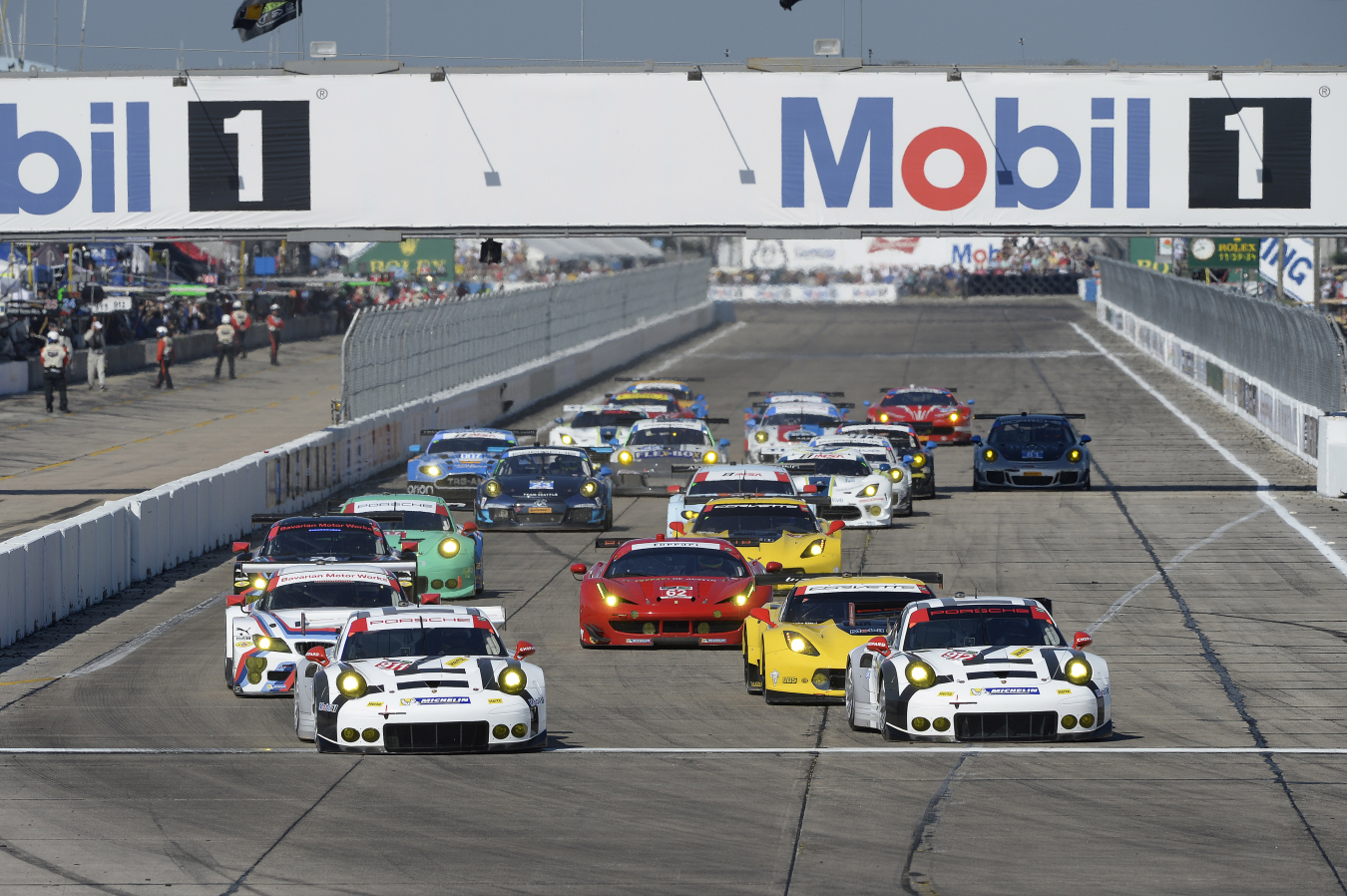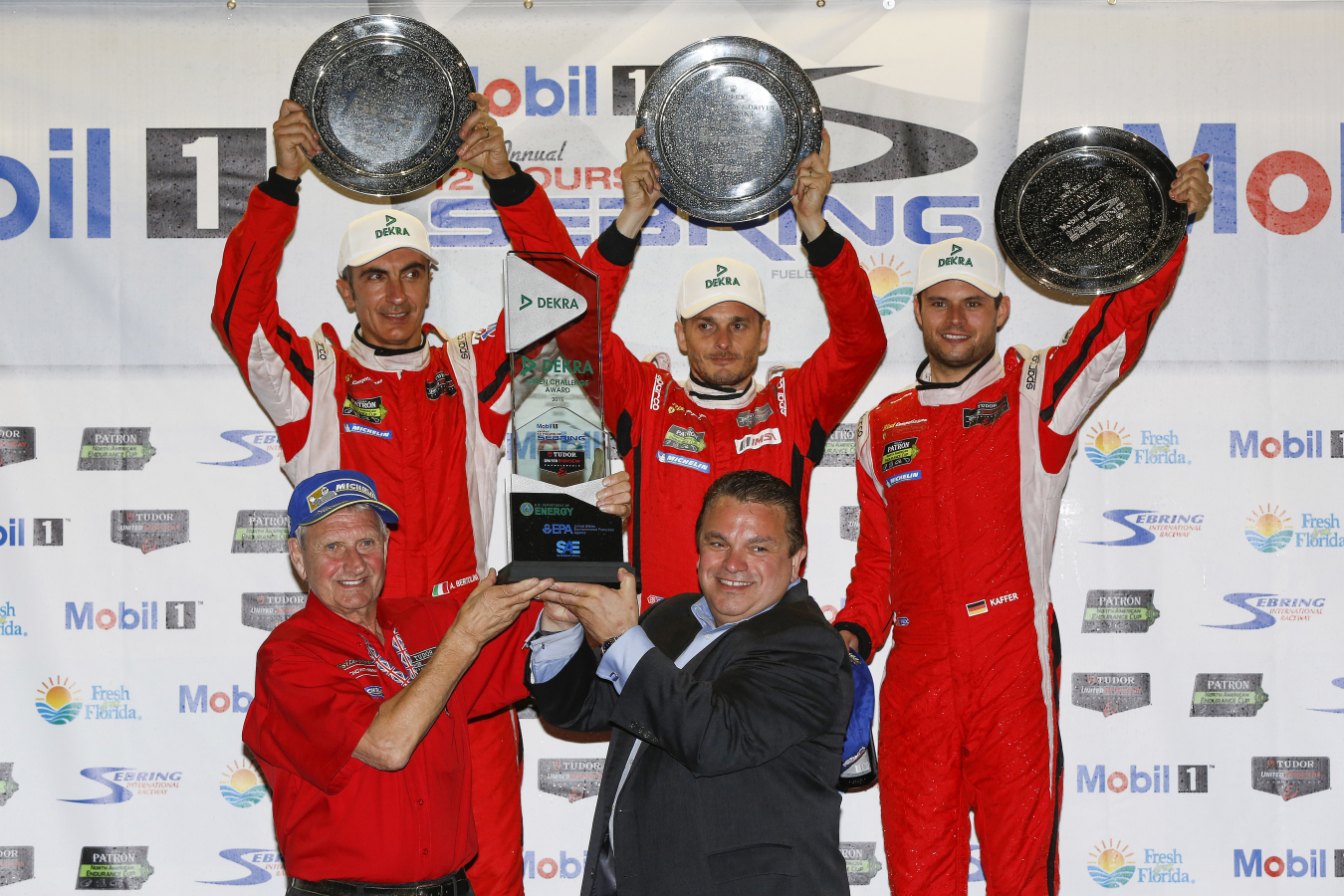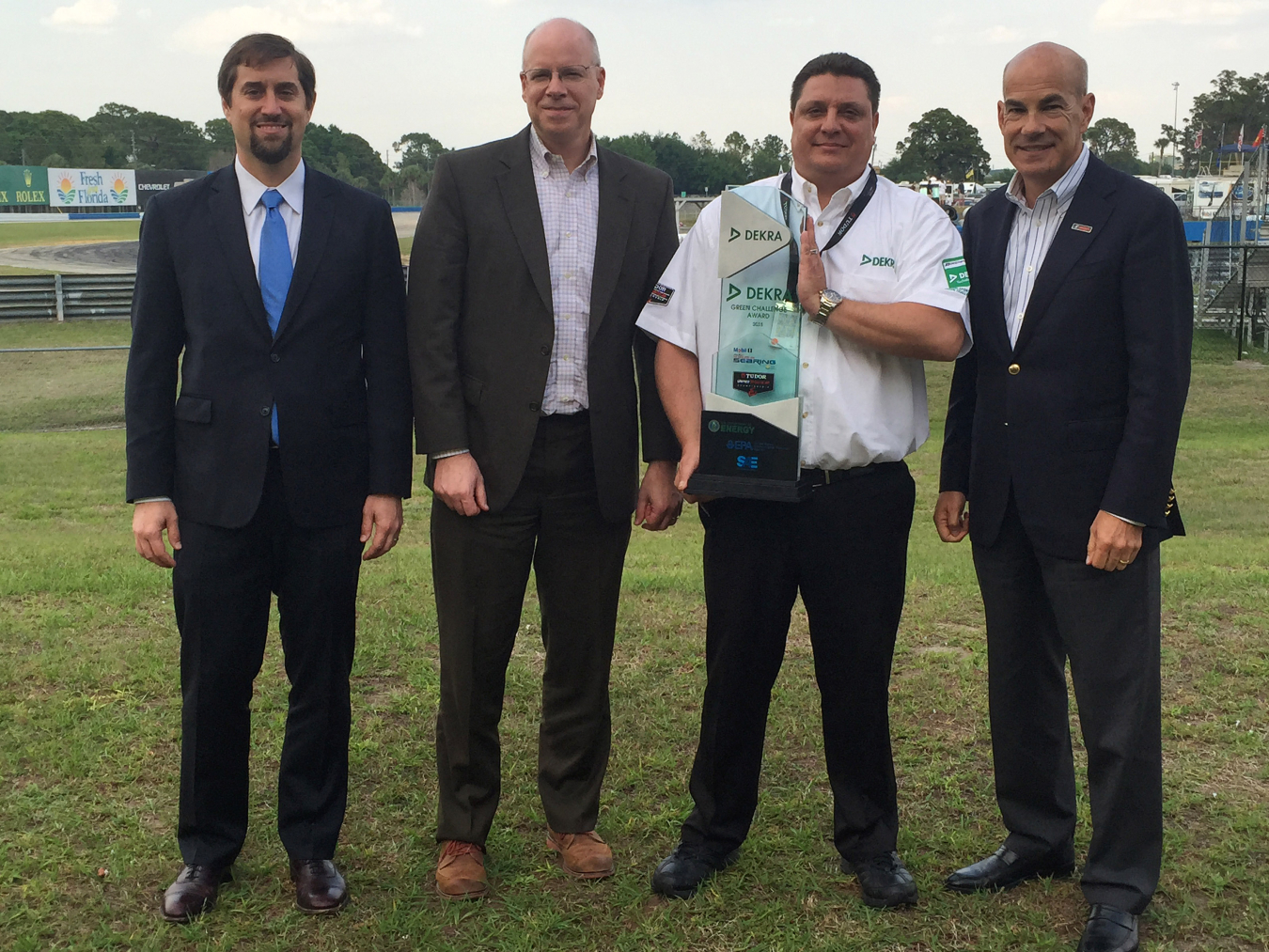
All cars competing in the TUDOR Championship utilize alternative fuels including E10, cellulosic E85 and renewable synthetic clean diesel. The Department of Energy supports the use of clean renewable fuels on the racetrack. <em>Photo courtesy of International Motor Sports Association</em>

DEKRA North America, Inc. congratulates Risi Competizione's Ferrari F458 Italia as the winner of the DEKRA Green Challenge Award in the Twelve Hours of Sebring race held in Sebring, Florida on March 21, 2015. DEKRA is the sponsor of the DEKRA Green Challenge Award, which recognizes the most environmentally "clean, fast, and efficient" GT Le Mans (GTLM) competitor in each TUDOR United SportsCar Championship Race. <em>Photo courtesy of DEKRA North America, Inc.</em>

A Green Racing panel gathered teams, auto manufacturers, racing series representatives, and members of the Green Racing initiative to discuss the future of advanced technologies and transferring those technologies to consumer vehicles. Pictured (left to right) are DOE Principal Deputy Assistant Secretary for the Office of Energy Efficiency and Renewable Energy Mike Carr, EPA Director of Transportation and Climate Division Karl Simon, DEKRA North America Business Development Manager Kirk Fordham, and IMSA President Scott Atherton. <em>Photo courtesy of International Motor Sports Association</em>
As motorsports enthusiasts know, racing innovation once meant turbine-powered Indy cars and six-wheeled formula cars, but those days are mostly over. Today, Green Racing encourages the use of innovative technologies that foster energy efficiency and renewable, low-carbon fuels. Green Racing is a partnership between the Energy Department (DOE), the Environmental Protection Agency (EPA), and SAE (the Society of Automotive Engineers ) to help develop, test and promote the use of cleaner fuels and advanced vehicle technologies through motorsports.
This past weekend, the International Motor Sports Association (IMSA), a Green Racing partner, reaffirmed its commitment to innovation. At a Green Racing Symposium, IMSA discussed ways it will encourage vehicle manufacturers and teams to push the limits of technologies on the track this season and beyond. Mike Carr, Principal Deputy Assistant Secretary of DOE’s Office of Energy Efficiency and Renewable Energy (EERE), participated in a Green Racing panel. This panel brought together teams, auto manufacturers, racing series representatives, and members of the Green Racing initiative to discuss the future of advanced technologies and transferring those technologies to consumer vehicles.
“We’ve seen how the use of innovative technologies on the racetrack translates to transportation improvements for us all, Carr said. “We’re excited to see racing teams competing with technologies from many Energy Department research areas to improve their efficiency and performance. By emphasizing the importance of efficiency in racing, IMSA is laying the foundation for new perspectives in personal mobility.”
While everyday technologies to improve vehicle safety such as rear view mirrors and seat belts started in motorsports, vehicle racing has also contributed greatly to improvements in performance and efficiency. High-pressure direct fuel injection pioneered in DOE-funded engine development is another technology now widely used in racing, especially high-speed diesel racing engines from Mazda and Audi. Through the use of advanced technologies, diesel racing engines now produce massive torque, impressive fuel efficiency, reduced emissions, and plenty of power. Many of the technologies first used on the race track are now in production cars for sale.
Following the symposium, participating IMSA racing teams showed how they use advanced technologies in one of the toughest endurance races in the world—the Mobile 1 63rd annual Twelve Hours of Sebring for the TUDOR United Sportscar Championship (TUDOR Championship). Risi Competizione's Ferrari F458 Italia emerged as the winner of the DEKRA Green Challenge Award. The award recognizes the most "clean, fast, and efficient" GT Le Mans (GTLM) competitor in each TUDOR Championship race as determined by the Green Racing Protocols established by DOE, EPA and SAE.
Racing teams have particularly embraced developments in lightweight materials supported by DOE’s Vehicle Technologies Office. These advanced materials have allowed engineers to reduce the mass of vehicles, improving their efficiency while maintaining or enhancing safety and performance. An example of this innovation is the DeltaWing car that competed at Twelve Hours of Sebring. Using new materials, it has a much lower curb weight and low-drag aerodynamics than most vehicles.
Beyond the vehicles themselves, DOE’s Bioenergy Technologies Office (BETO) supports the use of clean, renewable fuels on the racetrack through Green Racing and IMSA’s TUDOR Championship. E85R, a racing version of E85 (fuel with up to 85% ethanol) available to consumers, has been available to competitors in specific classes since 1998. Even though conventional E10 (10% ethanol) was also available, virtually all the teams in the GT Le Mans class have embraced E85R for its performance and environmental benefits.
By embracing a new level of technical innovation and reiterating its commitment to Green Racing, IMSA has opened the door to developing the next generation of propulsion, fuel, and material technologies that will be in future showrooms. Adopting the principles of Green Racing moves motorsports closer to sustainability and ushers in the next generation of road-relevant technologies and renewable fuels.
Stay tuned for future developments on the Green Racing website for new partners in motorsports that are building the groundwork for innovations in sustainable transportation.
